 |
| August 19, 2014 | Volume 10 Issue 31 |
Motion Control News & Products
Designfax weekly eMagazine
Archives
Partners
Manufacturing Center
Product Spotlight
Modern Applications News
Metalworking Ideas For
Today's Job Shops
Tooling and Production
Strategies for large
metalworking plants
Robots think and act on the fly at moving assembly line speeds
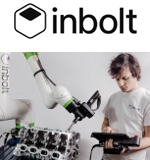 Inbolt and FANUC are launching a manufacturing breakthrough enabling FANUC robots to tackle one of the most complex automation challenges: performing production tasks on continuously moving parts at line speeds. With Inbolt's AI-powered 3D vision, manufacturers can now automate screw insertion, bolt rundown, glue application, and other high-precision tasks on parts moving down the line without costly infrastructure investments or cycle time compromises.
Inbolt and FANUC are launching a manufacturing breakthrough enabling FANUC robots to tackle one of the most complex automation challenges: performing production tasks on continuously moving parts at line speeds. With Inbolt's AI-powered 3D vision, manufacturers can now automate screw insertion, bolt rundown, glue application, and other high-precision tasks on parts moving down the line without costly infrastructure investments or cycle time compromises.
Learn more.
Best high-speed rotary bearing in THK history
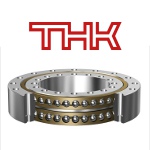 THK has developed its best-performing, high-speed rotary bearing ever: the High-Speed, Double-Row Angular Contact Ring BWH. This rotary bearing has balls aligned inside a cage between the inner and outer rings and is part of the THK Rotary Series, along with the cross-roller ring. The main features of this product are its ability to receive loads in all directions as well as its high rigidity and rotational accuracy, which are equal to that of cross-roller rings. By adopting a new structure to change the rolling elements from rollers to balls, this product achieves the greatest high-speed performance ever offered by THK.
THK has developed its best-performing, high-speed rotary bearing ever: the High-Speed, Double-Row Angular Contact Ring BWH. This rotary bearing has balls aligned inside a cage between the inner and outer rings and is part of the THK Rotary Series, along with the cross-roller ring. The main features of this product are its ability to receive loads in all directions as well as its high rigidity and rotational accuracy, which are equal to that of cross-roller rings. By adopting a new structure to change the rolling elements from rollers to balls, this product achieves the greatest high-speed performance ever offered by THK.
Learn more.
Elevating tables: Precise vertical positioning in tight spaces
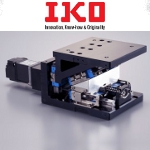 As semicon-ductors and optical components become smaller and more sophisticated, the TZ Series of precision elevating tables from IKO International provides exceptional vertical positioning accuracy in a compact size. This unit features a unique wedge mechanism guided in the vertical direction by a pair of IKO C-Lube Super MX linear motion rolling guides arranged in parallel to achieve highly precise positioning with exceptional rigidity. An optional linear encoder provides full closed loop control to achieve positioning accuracy as high as 0.005 mm, with repeatability of +/-0.001 mm.
As semicon-ductors and optical components become smaller and more sophisticated, the TZ Series of precision elevating tables from IKO International provides exceptional vertical positioning accuracy in a compact size. This unit features a unique wedge mechanism guided in the vertical direction by a pair of IKO C-Lube Super MX linear motion rolling guides arranged in parallel to achieve highly precise positioning with exceptional rigidity. An optional linear encoder provides full closed loop control to achieve positioning accuracy as high as 0.005 mm, with repeatability of +/-0.001 mm.
Learn more and get all the specs.
This cobot is all about safety around people
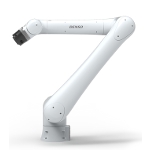 The COBOTTA PRO from DENSO Robotics is a lightweight, high-speed collaborative robot designed for communication between workers and robots while maximizing productivity. It delivers a blend of productivity and safety for both simple tasks and multi-step processes like assembly and inspection work. The 6-axis unit operates at speeds up to 2,500 mm per sec when no workers are near and slows or stops when people approach. Two models available: PRO 900 (max payload 6 kg) and PRO 1300 (max payload 12 kg). Many more functions and features.
The COBOTTA PRO from DENSO Robotics is a lightweight, high-speed collaborative robot designed for communication between workers and robots while maximizing productivity. It delivers a blend of productivity and safety for both simple tasks and multi-step processes like assembly and inspection work. The 6-axis unit operates at speeds up to 2,500 mm per sec when no workers are near and slows or stops when people approach. Two models available: PRO 900 (max payload 6 kg) and PRO 1300 (max payload 12 kg). Many more functions and features.
Learn more.
Powerful, pull-type clapper solenoids handle myriad jobs
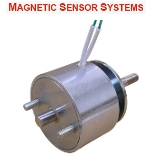 New powerful, low-profile, pull-type clapper solenoids are available from Magnetic Sensor Systems (MSS). Applications include valve control, locks, starters, ventilators, clamping, sorting, appliances, tools, HVAC, brakes, clutches, switches, mixing, fire suppression systems, door controls, detent latches, and more. The S-16-264 Series of 17 Pull-Type Clapper Solenoids have ampere turns (windings) adjusted to meet the specific force and duty cycle requirements of your application. They provide up to 130 lb (578 N) of force.
New powerful, low-profile, pull-type clapper solenoids are available from Magnetic Sensor Systems (MSS). Applications include valve control, locks, starters, ventilators, clamping, sorting, appliances, tools, HVAC, brakes, clutches, switches, mixing, fire suppression systems, door controls, detent latches, and more. The S-16-264 Series of 17 Pull-Type Clapper Solenoids have ampere turns (windings) adjusted to meet the specific force and duty cycle requirements of your application. They provide up to 130 lb (578 N) of force.
Get all the specs for these solenoids and other options.
Tech Tip: Belt, screw, or chain-driven actuator?
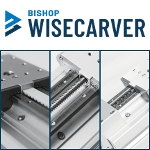 Bishop-Wisecarver provides a quick, very useful guide to help you evaluate the right drive strategy for your system: belt, screw, or chain-driven actuator. Each drive type has unique advantages and limitations, so evaluating all your options will help you find the most suitable actuator setup for your specific application needs.
Bishop-Wisecarver provides a quick, very useful guide to help you evaluate the right drive strategy for your system: belt, screw, or chain-driven actuator. Each drive type has unique advantages and limitations, so evaluating all your options will help you find the most suitable actuator setup for your specific application needs.
Read the Bishop-Wisecarver blog.
Ultra-precise linear stage -- down to 0.005 microns
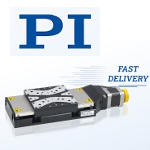 PI, a global leader in precision motion control and nanoposi-tioning, now offers fast delivery of the L-511 linear micropositioning stage, which is designed for applications requiring minimum incremental motion down to 20 nm, drive forces up to 22 lb, and multi-axis configuration options. The L-511 can be combined to form XY or XYZ motion systems and integrated with rotary stages. A variety of drive and encoder options (stepper and servo motors, rotary, and linear encoders) enable ultra-fine sensitivity. Applications include: metrology, laser processing, semiconductors, biotech, optical alignment, and advanced automation.
PI, a global leader in precision motion control and nanoposi-tioning, now offers fast delivery of the L-511 linear micropositioning stage, which is designed for applications requiring minimum incremental motion down to 20 nm, drive forces up to 22 lb, and multi-axis configuration options. The L-511 can be combined to form XY or XYZ motion systems and integrated with rotary stages. A variety of drive and encoder options (stepper and servo motors, rotary, and linear encoders) enable ultra-fine sensitivity. Applications include: metrology, laser processing, semiconductors, biotech, optical alignment, and advanced automation.
Learn more and get all the specs.
Choosing the right stepper motor: PM or hybrid?
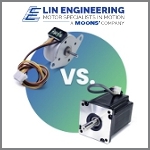 According to the experts at Lin Engineering, there are two primary types of stepper motors to consider: permanent magnet (PM) and hybrid. But which is right for your application? Both types have their advantages and disadvantages, and the choice ultimately depends on your specific requirements.
According to the experts at Lin Engineering, there are two primary types of stepper motors to consider: permanent magnet (PM) and hybrid. But which is right for your application? Both types have their advantages and disadvantages, and the choice ultimately depends on your specific requirements.
Read this informative Lin Engineering article.
New PTFE-free linear guide for precise positioning
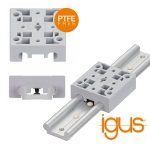 The new drylin WWP linear guide from igus features a PTFE-free locking carriage. Engineered from lubrication-free, high-performance polymers and aluminum, the guide offers a lightweight, hygienic, and low-maintenance alternative to complex mechanical and electronic adjustment systems. It is significantly more compact and lightweight than conventional recirculating ball-bearing systems. Applications include interior components in vehicles, aircraft, and furniture.
The new drylin WWP linear guide from igus features a PTFE-free locking carriage. Engineered from lubrication-free, high-performance polymers and aluminum, the guide offers a lightweight, hygienic, and low-maintenance alternative to complex mechanical and electronic adjustment systems. It is significantly more compact and lightweight than conventional recirculating ball-bearing systems. Applications include interior components in vehicles, aircraft, and furniture.
Learn more and get all the specs.
Heavy-duty gear units for mixing and agitating systems
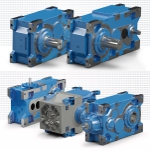 MAXXDRIVE industrial gear units from NORD DRIVE-SYSTEMS are an established drive solution for heavy-duty applications. In addition to conveying, lifting, and driving, they also play an important role in mixing and agitating systems. MAXXDRIVE units feature a compact, one-piece UNICASE housing that delivers long service life, easy maintenance, and quiet operation. Their robust design handles high axial and radial loads, achieves output torques up to 2,495,900 lb-in., and powers up to 8,075 hp.
MAXXDRIVE industrial gear units from NORD DRIVE-SYSTEMS are an established drive solution for heavy-duty applications. In addition to conveying, lifting, and driving, they also play an important role in mixing and agitating systems. MAXXDRIVE units feature a compact, one-piece UNICASE housing that delivers long service life, easy maintenance, and quiet operation. Their robust design handles high axial and radial loads, achieves output torques up to 2,495,900 lb-in., and powers up to 8,075 hp.
Learn more.
What are non-captive linear actuators?
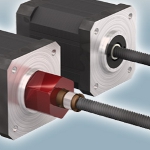 According to PBC Linear, their new non-captive linear actuators are different from the more common external versions of lead screw-driven linear actuators because they allow the lead screw to completely pass through the motor. This fundamental difference offers advantages for designs that have limited space available or for engineers looking to shrink the overall size of their design package.
According to PBC Linear, their new non-captive linear actuators are different from the more common external versions of lead screw-driven linear actuators because they allow the lead screw to completely pass through the motor. This fundamental difference offers advantages for designs that have limited space available or for engineers looking to shrink the overall size of their design package.
Read the full PBC Linear blog.
Güdel introduces Swiss-quality tracks for cobots
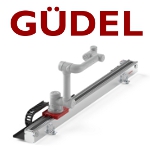 Güdel Inc. is highlighting new technologies at Automate 2025 booth #2418 that demonstrate its unmatched ability to solve automation engineering challenges. One is the Cobomover, a 7th-axis linear track purpose-built for collaborative and lightweight robots. Designed and manufactured in Switzerland, this unit extends the working range of robots up to 5 m, allowing them to operate multiple workstations and perform a variety of tasks without manual repositioning. Compatible with over 60 cobots and small traditional robots.
Güdel Inc. is highlighting new technologies at Automate 2025 booth #2418 that demonstrate its unmatched ability to solve automation engineering challenges. One is the Cobomover, a 7th-axis linear track purpose-built for collaborative and lightweight robots. Designed and manufactured in Switzerland, this unit extends the working range of robots up to 5 m, allowing them to operate multiple workstations and perform a variety of tasks without manual repositioning. Compatible with over 60 cobots and small traditional robots.
Learn more and get all the specs.
New open-center XYZ stage
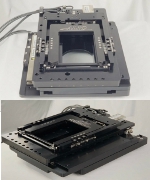 ThruSight-Focus is a high-performance, compact motion platform specifically engineered for applications requiring dual-side access to the sample or workpiece. It pairs ALIO's monolithic open-center XY stage -- known for its nanometer-level precision, crossed roller bearings, and direct linear drives -- with a novel Z-wedge mechanism that converts horizontal drive force into vertical motion via direct drive. This innovative architecture eliminates backlash, enhances servo responsiveness, and delivers fast, stable Z-axis movements -- all within a low-profile footprint.
ThruSight-Focus is a high-performance, compact motion platform specifically engineered for applications requiring dual-side access to the sample or workpiece. It pairs ALIO's monolithic open-center XY stage -- known for its nanometer-level precision, crossed roller bearings, and direct linear drives -- with a novel Z-wedge mechanism that converts horizontal drive force into vertical motion via direct drive. This innovative architecture eliminates backlash, enhances servo responsiveness, and delivers fast, stable Z-axis movements -- all within a low-profile footprint.
Learn more.
Eaton unveils differential engineered for EVs
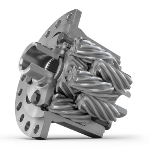 Intelligent power management company Eaton launched a new differential engineered specifically for electric vehicles at Auto Shanghai 2025 in China. The innovative design addresses the unique challenges presented by EV propulsion systems, including shared low-viscosity oil environments, increased sensitivity to noise, and the demands of high and instant torque delivery.
Intelligent power management company Eaton launched a new differential engineered specifically for electric vehicles at Auto Shanghai 2025 in China. The innovative design addresses the unique challenges presented by EV propulsion systems, including shared low-viscosity oil environments, increased sensitivity to noise, and the demands of high and instant torque delivery.
Read the full article.
Top Product: Integrated servo system is 20% smaller than standalone unit
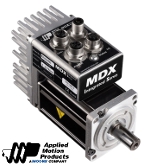 Applied Motion Products has introduced the MDX+ series, a family of low-voltage servo systems that integrate a servo drive, motor, and encoder into one package. This all-in-one drive is an ideal solution for manufacturers in logistics, AGV, medical, semiconductor, the solar industries, and many others.
Applied Motion Products has introduced the MDX+ series, a family of low-voltage servo systems that integrate a servo drive, motor, and encoder into one package. This all-in-one drive is an ideal solution for manufacturers in logistics, AGV, medical, semiconductor, the solar industries, and many others.
Read the full article.
Smarter ground robots partnering with Soldiers
By David Vergun
"In the Army, we always say, 'Never send our Soldier into a fair fight,'" said Heidi Shyu, assistant secretary of the Army for Acquisition, Logistics & Technology.
"Each of you here," from the robotics community, are "helping to make that happen."
Shyu, who provided the keynote address at National Defense Industrial Association's Ground Robotics Capabilities Conference & Exhibition in Hyattsville, MD, Aug. 13, emphasized common architecture, open-source software, and open standards for robotics development to further competition that will benefit the Army, taxpayers, and industry.
The Army is working with industry partners to develop a standard architecture that will enable it to incorporate future (robotics) capabilities rapidly, keeping pace with dramatic commercial improvements, Shyu said.
Getting the development of ground robotics right is important because the systems have become such an essential partner to warfighters, Shyu explained.
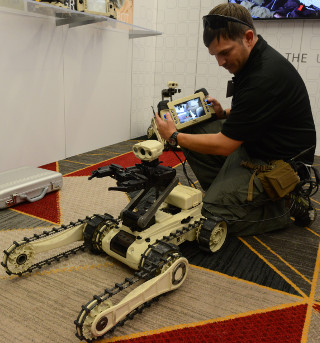
Shane Ward, of Roboteam North America, operates his robot at the National Defense Industrial Association's Ground Robotics Capabilities Conference & Exhibition in Hyattsville, MD, Aug. 13, 2014. [Photo Credit: David Vergun]
In 2004, 162 robotic systems were deployed to Iraq and Afghanistan, with a primary focus on explosive ordnance disposal, known as EOD, removal.
The use of ground robotics in combat since then has grown exponentially, with more than 7,000 systems currently deployed overseas, Shyu pointed out. Besides helping EOD, ground robots now carry weapons, cameras, and sensors for such things as detecting chemical, nuclear, and biological material.
"Proprietary" a dirty word
"Propriety is the worst word out there today," said Rich Ernst, interoperability lead, Office of the Secretary of Defense, referring to the opposite of open architecture, bolstering what Shyu had said earlier.
Ernst was part of an Open Architecture panel that followed Shyu's remarks.
While everyone knows the wisdom of having an open system, habits are hard to break, especially in the Defense Department, he said.
"Primes love open systems," Ernst said, "but then they'll tell you: 'Just don't mess with my existing system.'"
That existing system, he said, is "a legacy environment. They want to go back to that for the next 30 years."
"However, primes know they have to change because there are less programs going forward due to fiscal constraints," he added.
Besides an open architecture, Ernst said each system needs to be broken apart, made transparent, and competed to the most innovative vendor, which in many cases might likely be small businesses or start-ups.
A typical system might be broken apart into 50 sub-components, he continued. The only problem is the government now has trouble managing "just one chunk." It will take a while for government to embrace this concept.
Once open standards are implemented and components are competed in the marketplace, the ground robotics systems that emerge will provide the warfighters and the taxpayers their biggest return on investments, he predicted.
Ernst also had a few choice words about "lawyers in the Pentagon who lock things down in contracts" so changes to the platforms that make sense become hard to initiate.
"I found out quickly that no matter how well we come up with the standard or specification, the lawyers undo whatever the engineers do," he said.
Ernst said he now works with the lawyers and the primes as hard as he works with the software folks to ensure things get done.
Brian Gerkey, CEO of Open Source Robotics Foundation and another panel member, agreed with Ernst's assessment. He said Robot Operating System, or ROS, builds on open architecture.
ROS is an open-source set of powerful software libraries and tools that helps anyone -- from businesses to school kids -- build robot applications and share solutions and algorithms "so you're not constantly reinventing the wheel."
ROS has about a million users worldwide, he added, including NASA, which is about to install a ROS-developed robotics application on the International Space Station.
IOP vs. ROS
Mark Mazzara, Robotics Interoperability lead for Department of the Army Systems Coordinator for Robotics, was the third panel member. He said the Army's Unmanned Ground Vehicle Interoperability Profile, or IOP, is setting the architecture standard, and he hopes to see it accepted DOD-wide because "it's shown to reduce lifecycle costs."
Addressing Gerkey's earlier remarks, Mazzara said, "ROS is a great thing. The difference between ROS and IOP is IOP is more focused on interoperability between subsystems -- which messages flow between them -- not the components in the black box," which can be created using ROS tools and libraries.
Studies have been conducted showing that both ROS and IOP can coexist, and both can be used to ensure the architecture stays open, he added.
A caveat to that, he said, is that IOP is being developed within the U.S. government and is being shared with allies, including NATO. Industries that want to build components for Army robots need them to be IOP-certified.
Mazzara said he can't predict the future of IOP, and whether or not the government will turn it over to industry or to a non-profit robotics association that implements standards down the road.
"We'll just have to wait and see how it plays out," he said.
Smarter robots?
Mazzara added more to his thoughts on what the future holds for ground robots.
He thinks that an industry like agriculture could benefit from using some of the same or similar platforms the Army uses. Although the payloads would obviously be very different, a common mobility platform would make a better business case for internal investments, meaning quantity would drive down the cost of production.
The Army is now focused on modularity, ensuring components can be installed and removed in the "plug-and-play" mode that Shyu mentioned earlier, he said. The next phase, which will happen very soon, will focus on interoperability protocols between robots and manned ground vehicles, ground robots to ground robots, and ground robots to unmanned aerial systems.
Besides those interoperability requirements, the Army will soon turn its attention to interfacing geospatial data, databases, and even cloud computing with the ground robots so they can become smarter and more autonomous.
A key to all this, he said, is to surf the wave, keeping abreast of developments or emerging technologies in the automotive, mobile phone, software, Unmanned Aircraft Systems, and robotics industries. These are overlapping technologies that have applicability.
Combat patches earned
While the panel sees a bright future ahead once a few clouds move away, Shyu pointed to two examples where robots are being used successfully today on the battlefield in Afghanistan.
The Mini-EOD, referred to as "Devil Pup," can locate, identify, and disarm explosives, she said. It's so small and light that a Soldier can carry it in his or her rucksack on a long foot patrol.
Some 300 of them have been in theater over the last few years, at a cost of $35 million.
"It's truly saving Soldiers' lives," she said. "That's the power of robotics."
The other is the six-ton, M160 Anti-personnel Mine Clearance system, which can clear minefields in urban areas and practically any field condition. The M160 has "rendered previously unusable roads functional again," she said.
Near-term Army plans for robots include replacing the Talon Family of Robots with the Man Transportable Robotics System, or MTRS, a process that will take at least seven years, she said, noting that more than 2, 200 Talons have seen combat service over the past decade, and they're now past their service life.
Both the Talon and MTRS are tracked vehicles, with the Talon weighing 115 to 140 pounds and the MTRS 164. They can carry a number of payloads used for missions ranging from EOD to surveillance, with MTRS having planned chemical detection capability as well.
Between now and 2021, the existing Talons will get upgraded sensors and payload capacity, as a "bridging strategy" until MTRS can come online, Shyu explained.
Returning to her theme of common architecture, Shyu said MTRS will definitely have a capability so that if a camera, sensor, arm, or other component becomes obsolete, a new device can be fitted to its common chassis in a "plug-and-play" fashion.
As it stands now, the MTRS Increment II program will soon conduct an analysis of alternatives, "which will determine the best acquisition strategy to gain cost and performance efficiencies across multiple Army formations," according to the Program Executive Office for Ground Combat Systems.
Robots on the prowl
"The future of ground robots depends on their ability to operate in a very diverse and constrained environment," Shyu said. "Commercial autonomous vehicles today maneuver very well on well-defined roadways, where GPS maps are available."
However, formations have to navigate through challenging terrain like deserts, unpaved roads, rocky hillsides, jungles, and urban areas, often in adverse weather like snow, ice, and sandy deserts with temperatures in the triple digits.
Add to that contested environments where jamming and possible capture are possible.
"Efforts to overcoming these challenges are essential," Shyu said.
Despite tough fiscal environments, "our robotics industry continues to innovate," she concluded. "The future for ground robots has absolutely unlimited potential. Opportunities for invention and innovation are limited only by our own creativity and our willingness to take risks and take on new challenges."
The Army recognizes the value of science and technology efforts going into robotics, she added.
Despite fiscal challenges, the service is "working very hard to protect its S&T portfolio," she explained. "It used to be the Army's fourth biggest portfolio behind aviation, mission command, and ground combat systems. It's now the Army's third biggest portfolio.
"I'm excited to see what academia and industry can bring in terms of innovative solutions to solve some of our most difficult challenges," Shyu said.
Published August 2014
Rate this article
View our terms of use and privacy policy

